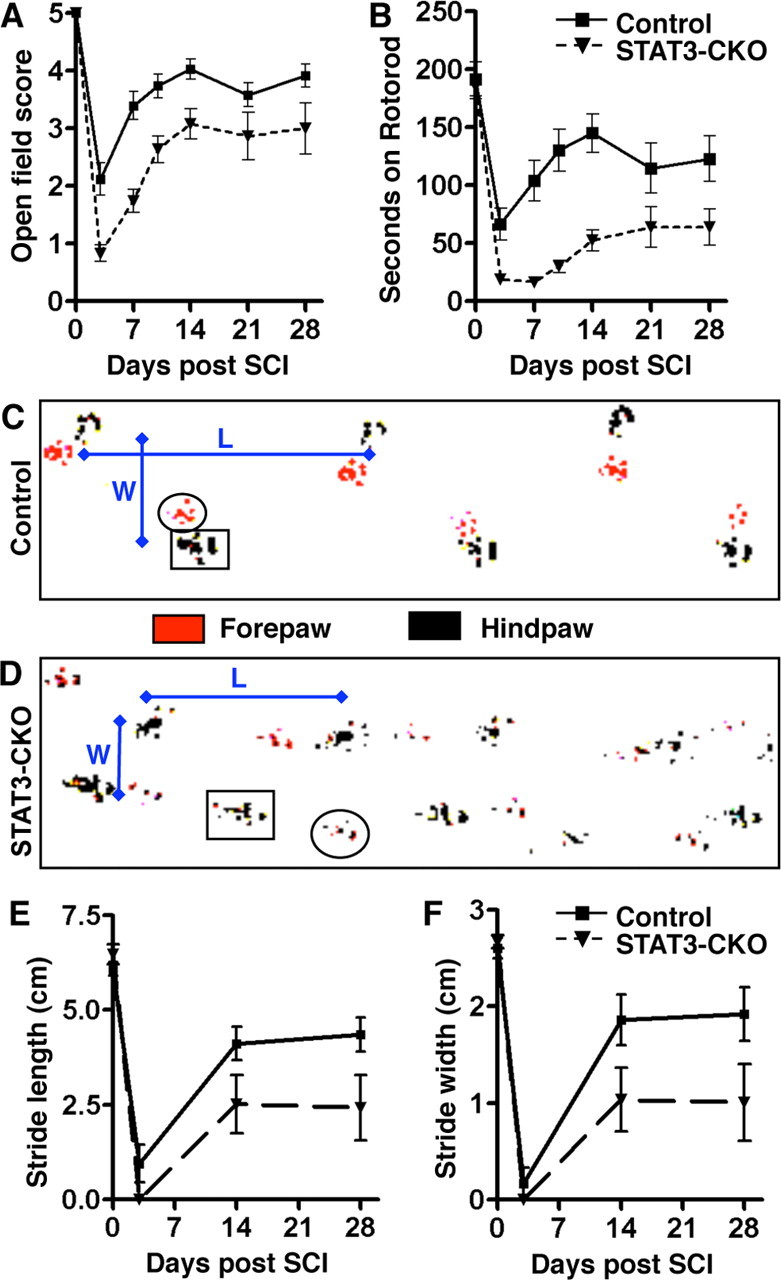Figure 13.

Attenuated motor recovery after moderate crush SCI in GFAP-STAT3-CKO mice. A, B, Graphs show performance of control and GFAP-STAT3-CKO mice in open-field walking (A) and rotorod (B) in uninjured mice (day 0) and over a 28 d period after moderate crush SCI. Open-field walking was scored by two observers blind to the experimental group (scale: 0, hindlimb dragging to 5, normal walking) (for details, see Materials and Methods). Rotorod performance was scored as time in seconds to fall during increasing rotation speed. C, D, Representative footprints of control (C) or GFAP-STAT3-CKO (D) mice at 14 d after SCI showing measurements in stride width (W) and stride length (L). E, F, Graphs of stride length (E) and stride width (F) in uninjured mice (day 0) and over a 28 d period after SCI in control and GFAP-STAT3-CKO mice. On all measures of motor performance, uninjured GFAP-STAT3-CKO mice were indistinguishable from uninjured controls. After moderate crush SCI, both control and GFAP-STAT3-CKO mice exhibited initial severe deficits in motor dysfunction with considerable return of function over the first 14 d; however, in all measures, GFAP-STAT3-CKO mice exhibited significantly lower scores than controls at 14 d and later (n = 11 or more per group per time point; *p < 0.05 ANOVA with post hoc pairwise analysis). Error bars indicate SEM.
